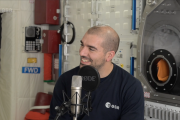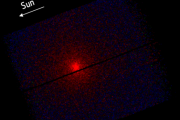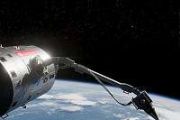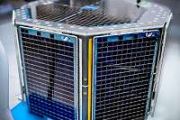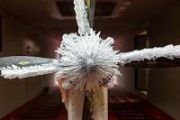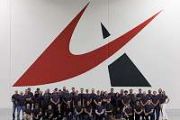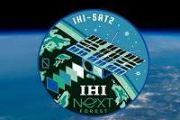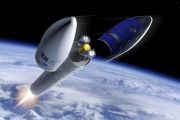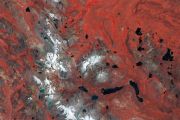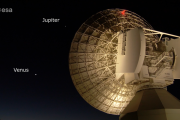
Copernical Team
Images of EDL Debris
 When Perseverance landed on Mars on February 18, 2021 the entry, descent, and landing (EDL) hardware was discarded onto the surface at a safe distance away from the rover.
Some of that EDL hardware was later imaged by Perseverance and Ingenuity. For example on Sol 414 (April 19, 2022), the Ingenuity helicopter returned a detailed color image of the discarded parachute and backshell located
When Perseverance landed on Mars on February 18, 2021 the entry, descent, and landing (EDL) hardware was discarded onto the surface at a safe distance away from the rover.
Some of that EDL hardware was later imaged by Perseverance and Ingenuity. For example on Sol 414 (April 19, 2022), the Ingenuity helicopter returned a detailed color image of the discarded parachute and backshell located Momentus First Demonstration Mission Status Update #4
 Momentus Inc. (NASDAQ: MNTS), a U.S. commercial space company that plans to offer transportation and other in-space infrastructure services, today provided its fourth Mission Update on its inaugural Vigoride mission that launched on May 25. Since the Company's last update on June 29, Momentus has successfully deployed four additional customer satellites.
Momentus initially deployed two cus
Momentus Inc. (NASDAQ: MNTS), a U.S. commercial space company that plans to offer transportation and other in-space infrastructure services, today provided its fourth Mission Update on its inaugural Vigoride mission that launched on May 25. Since the Company's last update on June 29, Momentus has successfully deployed four additional customer satellites.
Momentus initially deployed two cus Sidus Space selects AWS for LizzieSat constellation
 Sidus Space, Inc. (NASDAQ:SIDU), a Space-as-a-Service satellite company focused on commercial satellite design, manufacture, launch, and data collection is pleased to announce its selection of Amazon Web Services, Inc (AWS) to provide cloud storage of mission critical Satellite-as-a-Service operation and customer data for the upcoming LizzieSat Constellation.
The primary mission of LizzieS
Sidus Space, Inc. (NASDAQ:SIDU), a Space-as-a-Service satellite company focused on commercial satellite design, manufacture, launch, and data collection is pleased to announce its selection of Amazon Web Services, Inc (AWS) to provide cloud storage of mission critical Satellite-as-a-Service operation and customer data for the upcoming LizzieSat Constellation.
The primary mission of LizzieS SpaceX rocket fueled for launch this week to send Korean mission to moon
 South Korea and SpaceX are fueled and ready to send a spacecraft on a long journey this week that will ultimately take it around the moon.
The Korea Pathfinder Lunar Orbiter is scheduled to launch on Tuesday night from Cape Canaveral in Florida on the back of a SpaceX Falcon 9 rocket.
The KPLO is expected to go into a low-altitude orbit around the moon after it breaks free of the
South Korea and SpaceX are fueled and ready to send a spacecraft on a long journey this week that will ultimately take it around the moon.
The Korea Pathfinder Lunar Orbiter is scheduled to launch on Tuesday night from Cape Canaveral in Florida on the back of a SpaceX Falcon 9 rocket.
The KPLO is expected to go into a low-altitude orbit around the moon after it breaks free of the Solar storm expected to hit Earth, but likely 'weak,' forecasters say
 A solar storm birthed from a hole in the sun's atmosphere is expected to hit Earth's magnetic field Wednesday.
Scientists with the National Oceanic and Atmospheric Administration's Space Weather Prediction Center are calling for a chance of a geomagnetic storm, caused by a southern hole in the sun's atmosphere.
The gaseous material is flowing from the hole in the sun's atmosphere
A solar storm birthed from a hole in the sun's atmosphere is expected to hit Earth's magnetic field Wednesday.
Scientists with the National Oceanic and Atmospheric Administration's Space Weather Prediction Center are calling for a chance of a geomagnetic storm, caused by a southern hole in the sun's atmosphere.
The gaseous material is flowing from the hole in the sun's atmosphere Remote surgery robot to be tested aboard ISS
 A miniaturized robot invented by Nebraska Engineering Professor Shane Farritor may soon blast into space to test its skills. NASA recently awarded the University of Nebraska-Lincoln $100,000 through the Established Program to Stimulate Competitive Research (EPSCoR) at the University of Nebraska Omaha to ready the surgical robot for a 2024 test mission aboard the International Space Station.
A miniaturized robot invented by Nebraska Engineering Professor Shane Farritor may soon blast into space to test its skills. NASA recently awarded the University of Nebraska-Lincoln $100,000 through the Established Program to Stimulate Competitive Research (EPSCoR) at the University of Nebraska Omaha to ready the surgical robot for a 2024 test mission aboard the International Space Station. Mission ends for Copernicus Sentinel-1B satellite
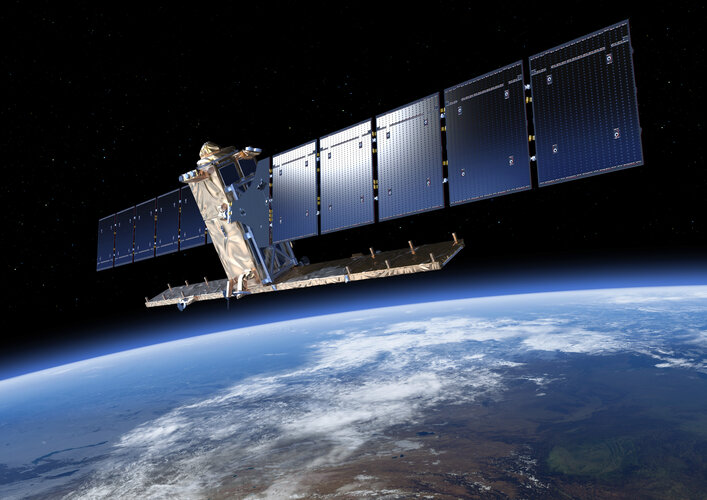
On 23 December 2021, Copernicus Sentinel-1B experienced an anomaly related to the instrument electronics power supply provided by the satellite platform, leaving it unable to deliver radar data. Since then spacecraft operators and engineers have been working tirelessly to rectify the issue. Unfortunately, despite all concerted efforts, ESA and the European Commission announce that it is the end of the mission for Sentinel-1B. Copernicus Sentinel-1A remains fully operational and plans are in force to launch Sentinel-1C as soon as possible.
Webb telescope captures colorful Cartwheel Galaxy

Remote surgery robot to be tested aboard International Space Station

A miniaturized robot invented by Nebraska Engineering Professor Shane Farritor may soon blast into space to test its skills.
NASA recently awarded the University of Nebraska-Lincoln $100,000 through the Established Program to Stimulate Competitive Research (EPSCoR) at the University of Nebraska Omaha to ready the surgical robot for a 2024 test mission aboard the International Space Station.
"NASA has been a long-term supporter of this research and, as a culmination of that effort, our robot will have a chance to fly on the International Space Station," Farritor said.
Farritor is co-founder of Virtual Incision, a startup company based on Nebraska Innovation Campus. For nearly 20 years, he and his colleagues have been developing the tiny surgical robot known as MIRA, short for "miniaturized in vivo robotic assistant.
Utah's Great Salt Lake is disappearing
 Utah's Great Salt Lake dropped to its lowest recorded water level last month as a megadrought persists across the US southwest, forcing the fast-growing city to curb its water use. From space, satellite images show how water levels have fallen from 1985 to 2022 - exposing large expanses of lakebed.
According to data from the US Geological Survey, the Great Salt Lake's surface water elevati
Utah's Great Salt Lake dropped to its lowest recorded water level last month as a megadrought persists across the US southwest, forcing the fast-growing city to curb its water use. From space, satellite images show how water levels have fallen from 1985 to 2022 - exposing large expanses of lakebed.
According to data from the US Geological Survey, the Great Salt Lake's surface water elevati 





